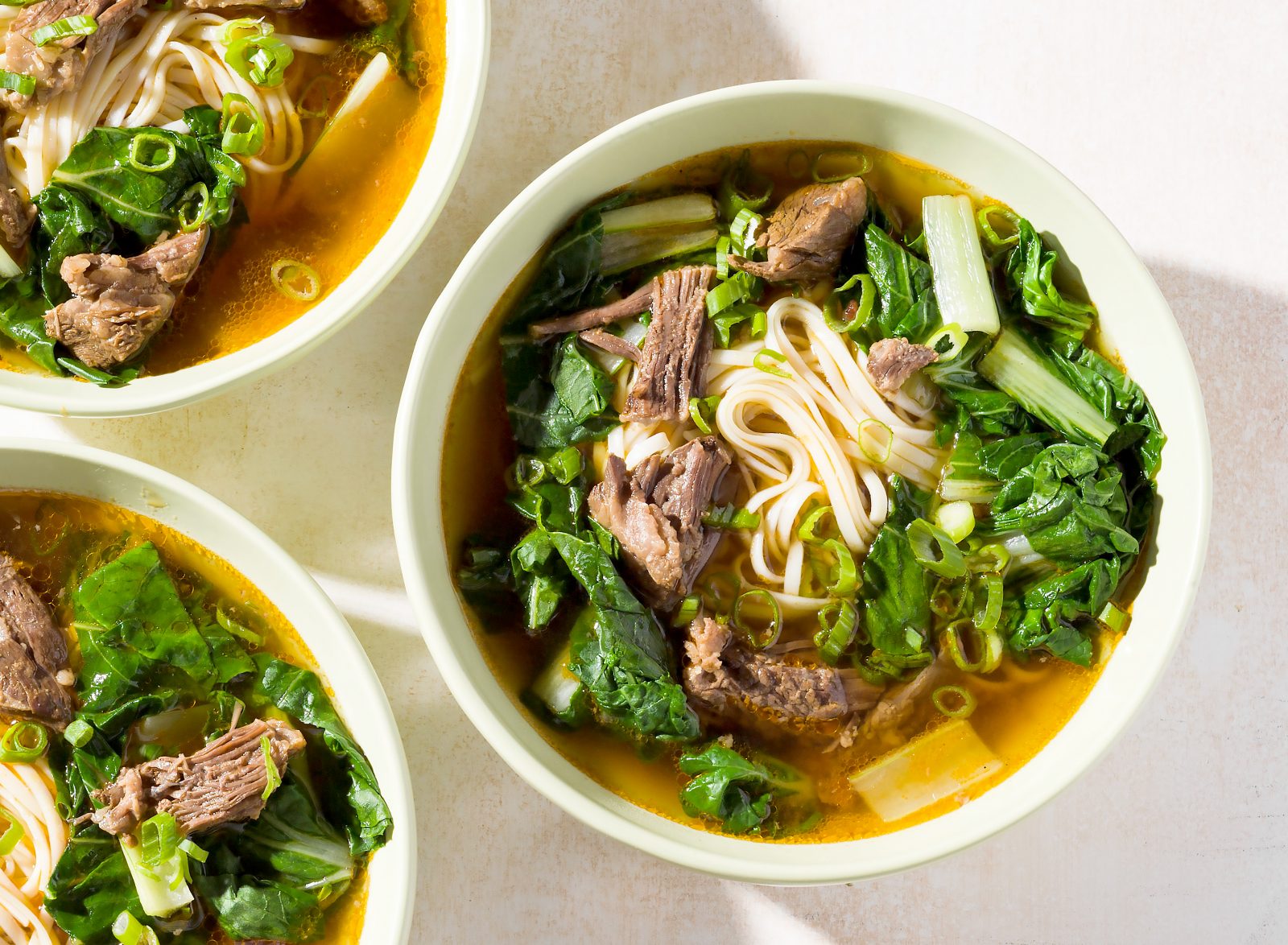Your email address is required to begin the subscription process. We will use it for customer service and other communications from Milk Street. You can unsubscribe from receiving our emails at any time.

Taiwanese Beef Noodle Soup
Niu rou mian, or beef noodle soup, is one of Taiwan’s signature dishes. Chuang Pao-hua, founder of the Chung-Hua Culinary Teaching Center, located in Taipei's Datong District, taught us how to make the hearty meal in a bowl the slow, labor-intensive traditional way. For our much-simplified and streamlined version, we use beef shanks, as the combination of bones and meat yield a richly flavored, full-bodied broth and tender, shreddable beef with a couple hours of simmering. Fragrant star anise and Sichuan peppercorns flavor the soup, along with toban djan, a spicy, fermented chili-bean paste. It's sold in most Asian markets, but if you can't find it, substitute with 2 tablespoons white miso mixed with 4 teaspoons Asian chili-garlic sauce and 2 teaspoons soy sauce The soup is lightly spicy; you can add more toban djan or some ground Sichuan pepper at the table for more heat. Chinese wheat noodles of any thickness worked well, as did Japanese udon and long, thin pastas such as spaghetti.
6
Servings
Don’t forget to skim the fat off the strained cooking liquid. This prevents the soup from tasting greasy. And don't rinse the drained noodles under cold water. Lukewarm water will keep them from cooling down completely.
2 hours 45 minutes
45 minutes active
Ingredients
-
1
tablespoon grapeseed or other neutral oil
-
6
garlic cloves, smashed and peeled
Directions
-
01In a large Dutch oven over medium, combine the oil, garlic, ginger and the white scallion parts. Cook, stirring, until sizzling, about 3 minutes. Stir in the star anise and peppercorns, then cook until fragrant, about 30 seconds. Stir in the chili-bean sauce, tomato paste and brown sugar, then pour in the soy sauce, rice wine and water. Bring to a boil over high.
Pardon the interruption
You need to be a Milk Street Digital Member to see the full recipe
JOIN MILK STREET DIGITAL & PRINT
12 WEEKS FOR JUST $1
and get access to all of our recipes and articles online, as well as in print.
GET DIGITAL & PRINTHi Neill -
Unfortunately, short ribs are quite meaty and fatty and don't have much (if any) marrow in their thin, narrow bones. For this recipe, the shank is not only there for the meat, but also because the shank bones are rich in marrow and gelatin, which give the soup its silky texture. If you can't find beef shank, we would probably recommend substituting boneless beef chuck cut into 1-1 1/2 inch cubes combined with a few marrow bones. Beef shank and marrow bones are sometimes not displayed in the meat section, but we often find that the meat department has these in the back and will sell them to you if you ask!
Best,
The Milk Street Team
Excellent. Before the pandemic meant we could no longer go to the office, I would eat at Xi'an Famous Foods in New York at least once a month. Of course this isn't the same (I am not handpulling fresh made noodles, among other things) but it lets me at least get my fix for a spicy brothy vegetable noodle soup.
Hi Justin -
Toban djan is fermented bean paste whereas gochujang is fermented chili powder and glutinous rice so their flavor profiles are quite different. The Lee Rum Kee brand of Chili Bean Sauce is pretty prevalent in most supermarkets. However, as a substitute we recommend a combination of 2 tablespoons of white miso, 4 teaspoon chili garlic sauce, and 2 teaspoons soy sauce.
Best,
The Milk Street Team


Beef shanks are extremely difficult to find. Would bone in short ribs work (or something else)?